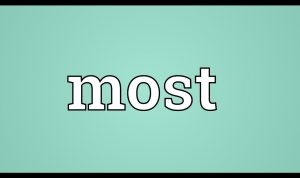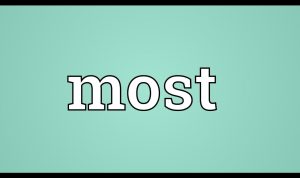Most User-Friendly Cash Advance Apps in America sets the stage for this enthralling narrative, offering readers a glimpse into a realm where financial solutions are not only accessible but also easy to navigate. As individuals increasingly turn to technology for their financial needs, the demand for user-friendly cash advance apps has surged. These applications not only provide quick access to funds but do so in a manner that prioritizes the user experience, making them indispensable tools in today’s fast-paced financial landscape.
In this exploration, we will delve into the defining characteristics of the most user-friendly cash advance apps, examining their features, functionality, and the overall ease with which they enable users to manage their finances. By understanding what makes these apps stand out, consumers can make informed choices that align with their financial needs and preferences.
In the realm of contemporary literature, the portrayal of dystopian societies offers a profound commentary on the intricacies of human existence and the socio-political structures that govern it. Dystopian narratives serve as a reflection of our darkest fears and aspirations, often employing speculative elements to address pressing issues within our world. This article aims to delve into the thematic depth and narrative techniques employed in notable dystopian works, exploring how they resonate with contemporary audiences and provoke critical thought regarding our own societal constructs.Dystopian literature has its roots in the utopian visions of earlier literary works, where authors such as Thomas More envisioned ideal societies.
However, it was not long before writers began to explore the potential consequences of these idealized visions collapsing into oppressive regimes. The term “dystopia” itself encapsulates this shift in perspective, highlighting the contrasts between utopian ideals and the grim realities that may arise from their pursuit. Notable works such as George Orwell’s “1984,” Aldous Huxley’s “Brave New World,” and Margaret Atwood’s “The Handmaid’s Tale” have established a formidable canon that continues to resonate with readers.One of the key elements of dystopian literature is its ability to reflect contemporary anxieties.
For instance, Orwell’s “1984,” published in 1949, serves as a chilling exploration of totalitarianism and the mechanisms of surveillance. The concept of “Big Brother” has transcended its fictional origins, becoming a metaphor for the pervasive surveillance culture that characterizes modern society. Through the protagonist Winston Smith’s struggle against the Party’s oppressive control, Orwell illustrates the erosion of individual freedoms and the manipulation of truth.
The novel’s relevance has only intensified in the digital age, as concerns over data privacy and government overreach become increasingly prominent.Similarly, Huxley’s “Brave New World” presents a starkly different dystopian vision, one characterized by the commodification of happiness and the sacrifice of individuality for societal stability. The World State in Huxley’s narrative employs advanced technology and psychological manipulation to maintain control over its citizens, illustrating the potential consequences of unbridled consumerism and the quest for superficial pleasure.
The novel challenges readers to consider the implications of sacrificing meaningful relationships and authentic experiences in exchange for convenience and instant gratification. In an age dominated by social media and consumer culture, Huxley’s cautionary tale serves as a pertinent reminder of the dangers inherent in prioritizing pleasure over substance.Margaret Atwood’s “The Handmaid’s Tale,” another cornerstone of dystopian literature, offers a harrowing account of gender oppression through the lens of a theocratic regime.
The novel’s protagonist, Offred, navigates a world where women’s rights are systematically stripped away in favor of a patriarchal society that values reproduction above all else. Atwood’s exploration of power dynamics, identity, and resistance resonates deeply in a contemporary context where debates surrounding reproductive rights and gender equality remain contentious. The novel’s resurgence in popularity, particularly through its adaptation into a successful television series, underscores the enduring relevance of its themes and the urgent call for social change.The narrative techniques employed in dystopian literature also play a crucial role in enhancing its impact.

The use of first-person narratives, as seen in “1984” and “The Handmaid’s Tale,” fosters a profound sense of intimacy between the protagonist and the reader, allowing for an immersive exploration of the characters’ inner struggles and the societal forces that shape their realities. This perspective invites readers to empathize with the characters, prompting a personal reflection on the implications of their experiences in relation to the broader societal issues at hand.Furthermore, the blending of speculative elements with realistic socio-political commentary enhances the authenticity of dystopian narratives.
By extrapolating current trends to their extreme conclusions, authors compel readers to confront the potential trajectories of their own societal structures. This speculative fiction serves as a cautionary lens, illuminating the fragility of democracy and the importance of vigilance in safeguarding individual rights and freedoms.As dystopian literature continues to evolve, contemporary authors are increasingly incorporating intersectional perspectives that address the complexities of identity and oppression.
Works such as Nnedi Okorafor’s “Binti” and Colson Whitehead’s “The Underground Railroad” illustrate how the genre can transcend traditional boundaries and explore the experiences of marginalized communities. These narratives challenge the notion of a monolithic dystopia, highlighting how societal oppression manifests differently across various identities and experiences.Moreover, the rise of climate fiction, or “cli-fi,” within the dystopian genre reflects the growing urgency of environmental issues.
Novels like Kim Stanley Robinson’s “New York 2140” and Octavia Butler’s “Parable of the Sower” imagine futures shaped by climate change, exploring the ethical implications of human action on the planet. In doing so, these works prompt readers to consider their own roles in addressing environmental challenges and the potential consequences of inaction.In conclusion, dystopian literature serves as a critical mirror reflecting the complexities of human existence and the socio-political structures that shape our lives.
Through compelling narratives and thought-provoking themes, authors invite readers to grapple with their own realities and consider the implications of their choices. As contemporary society grapples with issues of surveillance, consumerism, gender equality, and environmental degradation, the resonance of dystopian narratives remains ever-present. The genre’s ability to provoke critical thought and inspire social change solidifies its importance in the literary canon and beyond.
As we venture further into the 21st century, the lessons gleaned from dystopian literature will undoubtedly remain relevant, urging us to remain vigilant in our pursuit of a just and equitable society.





